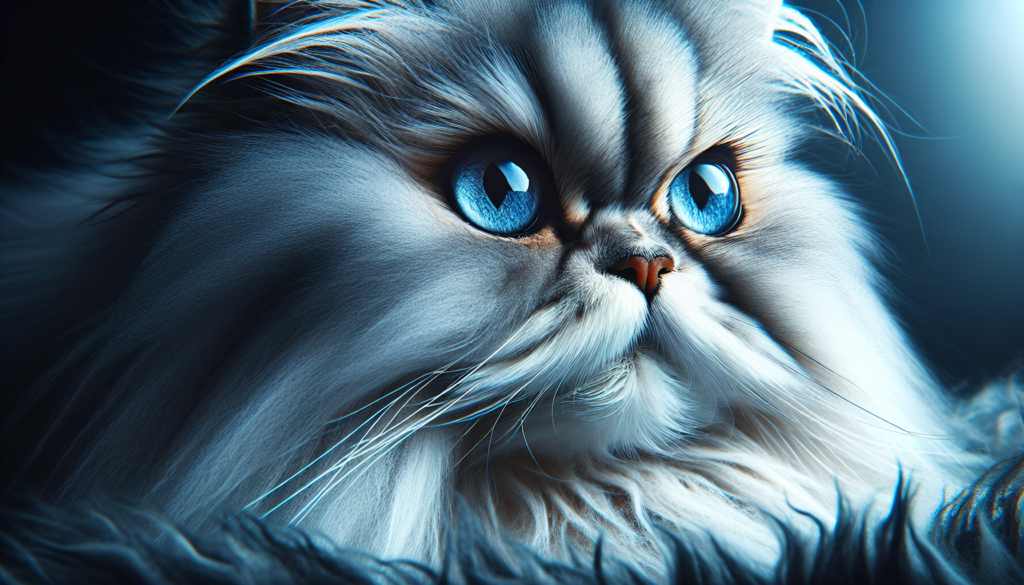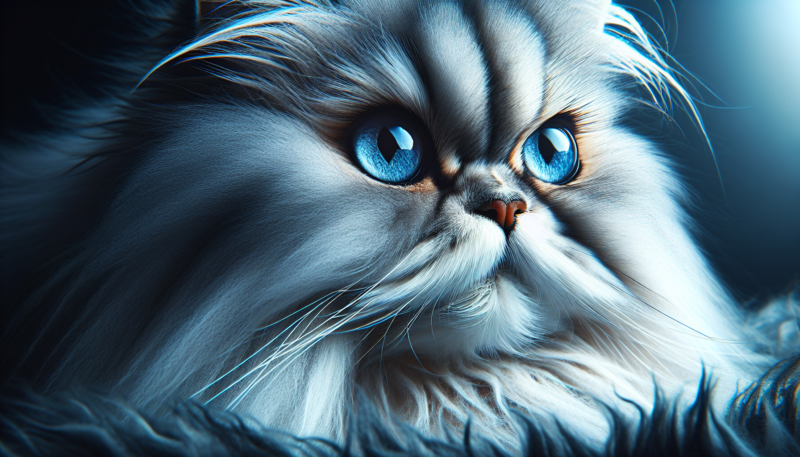Did you know that Persian cats have one of the longest lifespans among domestic cat breeds? Known for their luxurious long coats and distinctive round faces, these adorable feline companions can live up to 15 years or even longer with proper care. In this article, we’ll explore the factors that contribute to the lifespan of Persian cats and provide helpful tips to ensure they lead a healthy and happy life. So, if you’re a proud owner or considering welcoming one into your family, read on to discover more about the fascinating lifespan of these gorgeous cats!
Lifespan of a Persian Cat
Persian cats are known for their luxurious coats, expressive eyes, and calm demeanor. If you’re considering adding a Persian cat to your family, it’s important to understand their lifespan and the factors that can affect it. This comprehensive article will guide you through the average lifespan of a Persian cat, the stages of their life, factors that influence their lifespan, common health issues they may face, and strategies to extend their lifespan.
1. Average Lifespan
The average lifespan of a Persian cat is around 12 to 16 years. However, with proper care, some Persian cats have been known to live well into their early 20s. Providing a loving and nurturing environment, along with regular veterinary check-ups and a balanced diet, can greatly contribute to their longevity.
1.1 Factors Affecting Lifespan
Several factors can affect the lifespan of a Persian cat. The most significant factors include genetics, health and wellness, diet and nutrition, exercise and activity, and veterinary care. Let’s explore each of these factors in more detail.

2. Understanding the Stages of a Persian Cat’s Life
A Persian cat goes through several distinct stages in its life, similar to other feline companions. Understanding these stages can help you provide appropriate care and support for your beloved Persian cat at each stage.
2.1 Kittenhood (0-6 months)
During the kittenhood stage, Persian cats are full of energy and curiosity. They require nurturing care, a balanced diet specially formulated for kittens, plenty of playtime, and frequent vet check-ups to ensure proper growth and development.
2.2 Adolescence (6 months-2 years)
As Persian cats transition into adolescence, they may exhibit more independence and exhibit their unique personalities. This stage is crucial for socialization and training. Providing mental and physical stimulation, along with a healthy diet and regular veterinary care, is essential for their well-being.
2.3 Prime Adulthood (2-6 years)
Prime adulthood is when Persian cats reach their physical and emotional maturity. They are typically more calm and require a steady routine to thrive. A nutritious diet, exercise, and regular veterinary check-ups become even more important to maintain their overall health and well-being.
2.4 Mature Adulthood (6-10 years)
During mature adulthood, Persian cats may start to experience some age-related changes. They may become less active and develop specific dietary needs. Monitoring their weight, continuing regular veterinary care, and providing mental stimulation are crucial during this stage.
2.5 Senior Years (10+ years)
As Persian cats enter their senior years, they require extra care and attention. Regular veterinary check-ups, a balanced diet tailored to their age and health conditions, and a comfortable living environment are necessary to ensure their quality of life during this stage.
3. Factors That Influence Lifespan
Various factors can significantly influence the lifespan of a Persian cat. Understanding these factors can help you make informed decisions to enhance their well-being and longevity.
3.1 Genetics and Breed
Genetics play a vital role in a Persian cat’s lifespan. Responsible breeders prioritize breeding cats with healthy genetic backgrounds to minimize the risk of hereditary diseases and conditions that can impact a cat’s lifespan.
3.2 Health and Wellness
Maintaining your Persian cat’s overall health and wellness is crucial for their longevity. Regular vet check-ups, vaccinations, parasite prevention, and addressing any health issues promptly can greatly contribute to their lifespan.
3.3 Diet and Nutrition
Providing a balanced and nutritious diet is paramount to a Persian cat’s well-being and longevity. Feeding high-quality cat food that meets their specific dietary needs, avoiding overfeeding, and providing clean water are crucial for their overall health.
3.4 Exercise and Activity
While Persian cats are not known for their athleticism, engaging them in regular exercise and providing mental stimulation is important. Encouraging playtime, offering interactive toys, and creating a stimulating environment can contribute to their physical and mental well-being.
3.5 Veterinary Care
Regular veterinary care, including check-ups, vaccinations, and preventative care, can help detect any health issues early on and ensure timely intervention. Following your vet’s recommendations, scheduling annual wellness exams, and addressing any concerns promptly can extend your Persian cat’s lifespan.

4. Common Health Issues
Persian cats, like other breeds, are prone to certain health issues. Being aware of these common health issues can help you spot any potential problems and seek veterinary care promptly.
4.1 Respiratory Problems
Due to their unique facial structure and shortened nose, Persian cats are susceptible to respiratory issues such as brachycephalic airway syndrome. It’s important to monitor their breathing and consult with a vet if you notice any signs of difficulty breathing, sneezing, or nasal discharge.
4.2 Polycystic Kidney Disease (PKD)
PKD is a hereditary condition commonly found in Persian cats, characterized by the formation of cysts in the kidneys. Regular screening and early detection are necessary to manage this condition and prevent complications.
4.3 Dental Issues
Persian cats are prone to dental problems such as gum disease and tooth decay. Establishing a regular dental care routine, including brushing their teeth and providing dental treats or toys, can help maintain their oral health and prevent potential issues.
4.4 Eye Conditions
Their beautiful eyes can also be prone to certain issues, including cherry eye, entropion, and progressive retinal atrophy (PRA). Regular eye examinations and prompt veterinary care can help manage and treat these conditions effectively.
4.5 Obesity and Diabetes
Persian cats can be prone to weight gain, which can lead to obesity and, subsequently, diabetes. Monitoring their weight, providing a balanced diet, and engaging them in regular exercise can help prevent these conditions.
5. Lifespan-Extending Strategies
While you cannot control every aspect of your Persian cat’s lifespan, there are several strategies you can implement to promote their longevity and well-being.
5.1 Balanced Diet
Providing a balanced and age-appropriate diet tailored to your Persian cat’s specific needs is crucial. Consulting with your vet to determine the best nutritional plan and avoiding excessive treats or table scraps can help maintain their optimal weight and overall health.
5.2 Regular Veterinary Check-ups
Routine veterinary check-ups are essential for early detection of any health issues. Annual wellness exams, vaccinations, parasite prevention, and age-appropriate screenings can significantly impact the lifespan of your Persian cat.
5.3 Dental Care
Establishing a regular dental care routine, including brushing their teeth or using dental products recommended by your vet, can prevent dental issues and promote their overall health. Regular professional dental cleanings may also be necessary.
5.4 Exercise and Mental Stimulation
Engaging your Persian cat in regular exercise and providing mental stimulation can enhance their overall well-being. Playtime, interactive toys, and providing a stimulating environment can contribute to their physical and mental health.
In conclusion, understanding the lifespan of a Persian cat and the factors that can influence it is crucial for providing the best care possible. By considering genetics, prioritizing health and wellness, providing a balanced diet, regular exercise, and veterinary care, and being aware of common health issues, you can help ensure a long and healthy life for your beloved Persian cat. Remember, their well-being and happiness depend on your love, care, and attention!
